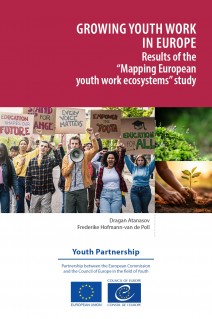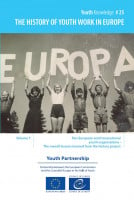In recent years, the Council of Europe and the European Commission have decided to enhance their co-operation on youth work. Recommendation CM/Rec(2017)4 of the Committee of Ministers of the Council of Europe on youth work, the 3rd European Youth Work Convention (2020) and the consequent European Union Resolution of the Council on the European Youth Work Agenda (EYWA) in 2020 were key milestones in this direction. In line with these developments, in 2022-23, the EU–Council of Europe Partnership in the field of youth stepped up its activities on youth work and on the implementation of the EYWA, among others, by facilitating the dialogue within the youth work community of practice.
The EYWA is a strategic framework for strengthening and developing quality and innovation in, and recognising, youth work. Within this framework, a field of action has been established where a variety of European stakeholders, first and foremost the European Union and the Council of Europe, provide guidance through European policy documents and initiate activities and measures to further develop youth work structurally and in terms of content. At the European level, several institutions, organisations, agencies and individuals address the contents of the EYWA.
The aim of the “Mapping European youth work ecosystems” study is to depict the diversity of actors and their initiatives and to highlight thematic overlaps, on the one hand, and thematic gaps, on the other hand, by providing a systematic overview of actors in this field and contents. Based on the findings of the study, several recommendations for the European community of practice have been developed, including the need for further dialogue on the nature of the EYWA and the need to reach a common understanding of its purpose and priorities.
1. INTRODUCTION
1.1. Methodology
1.2. Limitations of the study
2. HISTORY AND DEFINITION OF THE EUROPEAN YOUTH WORK AGENDA
2.1. A short history of European youth work development
2.2. The European Youth Work Agenda defined
3. THE EUROPEAN YOUTH WORK ECOSYSTEM
3.1. Ecosystem theory
3.2. The ecosystem: actors, roles and projects
3.3. Visualisation of the European youth work ecosystem
3.4. European youth work projects
4. EXPECTATIONS: AN IDEAL ECOSYSTEM
4.1. The role of the actors in an ideal ecosystem
4.2. Visualisation of the ideal ecosystem
5. THE EUROPEAN YOUTH WORK AGENDA: EXPECTATIONS, VISIONS AND CHALLENGES
5.1. Expectations towards the European Youth Work Agenda
5.2. Visions on the future of European youth work
5.3. Challenges
6. CONCLUSIONS
6.1. Recommendations
REFERENCES ABOUT THE AUTHORS







